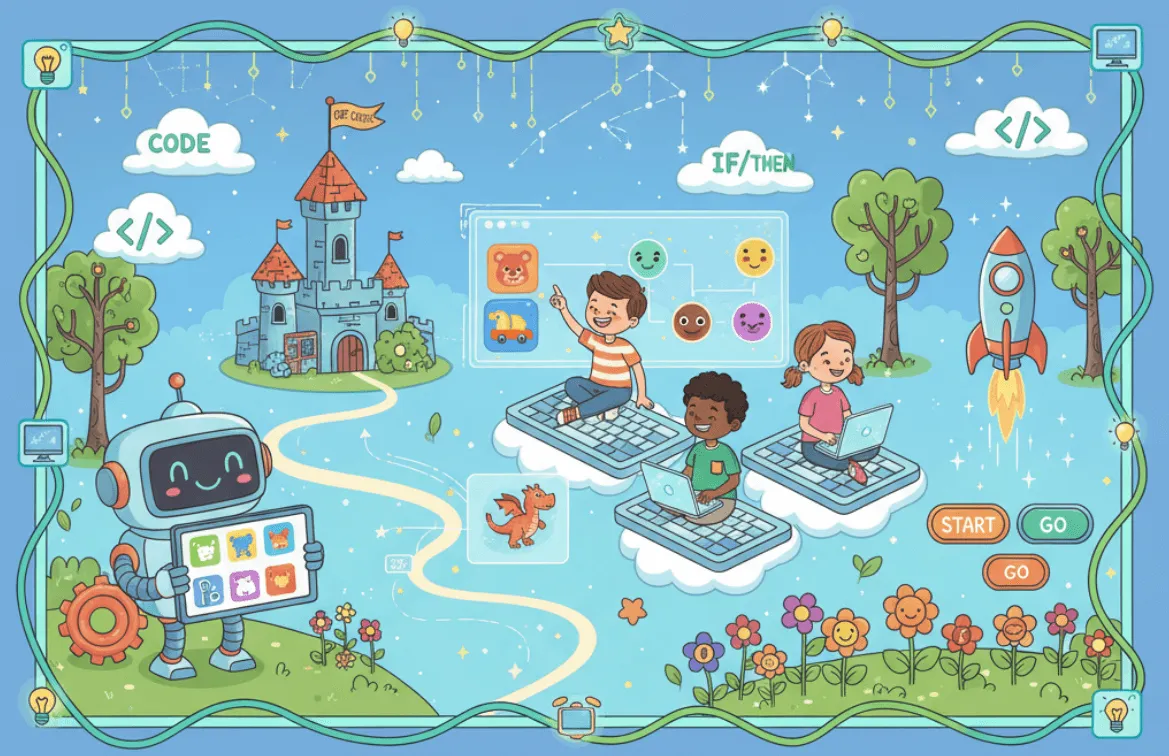
What is coding for kids? It's like giving a computer a set of instructions. The idea of teaching your child to code can feel difficult. But getting started is easier now in 2025 than ever before. Parents have access to a lot of free, high-quality platforms and tools. Finding the right coding language for your child is the perfect first step on this exciting journey.
This guide is designed to break it all down into simple, actionable steps. We'll introduce you to the best coding languages for kids, explore traditional and modern AI-powered approaches, and show you exactly how to get started—today. By learning to code, kids develop important skills that go far beyond technology, like problem-solving, logical thinking, and creativity.
Safe, offline AI assistant that provides patient, judgment-free coding help. Perfect for young learners exploring programming.
CONTENT:
Best Kids Coding Languages
1 Python
The champion, absolutely. Its clean syntax reads like English, making it accessible for beginners while scaling beautifully to professional development. Kids can build games with Pygame, create simple apps, automate tasks, and even tinker with AI. It works on every operating system with tons of friendly curricula available. While Scratch might be friendlier for very young kids, Python transitions seamlessly into real-world coding across multiple domains.
2 Scratch
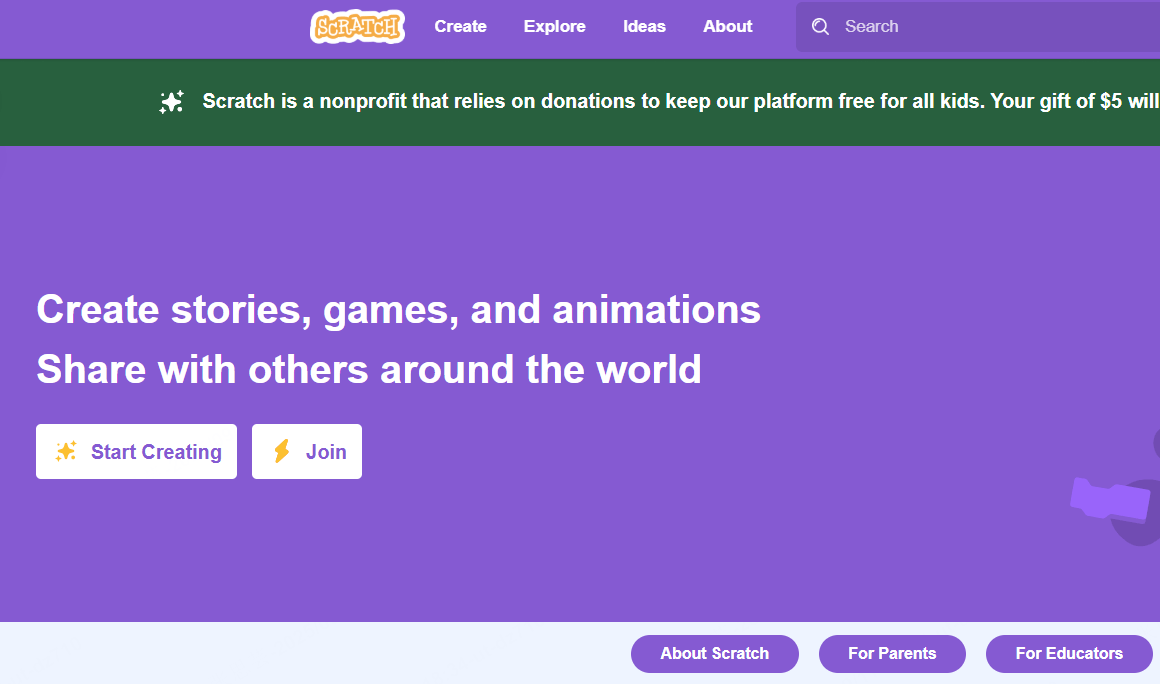
Scratch is a great way for young kids to start coding. By dragging and dropping colorful blocks, children learn fundamental programming concepts like logic, sequencing, loops, and events without typing a single line of code. The massive community provides endless tutorials and projects to remix. It's perfect for creating interactive stories and simple 2D games, and the fun, playful nature of the platform is key to turning a temporary try into a long-term interest.
3 JavaScript
If your kid enjoys building text-based games or wants instant visual feedback, JavaScript is ideal. It powers the internet—from interactive websites to Discord bots—and requires zero installation. The close relationship with HTML allows kids to easily connect their code to web pages, making learning both practical and fun.
4 Lua
Lua is good for game development because it's specifically designed for that purpose, unlike more general-purpose languages like Python or JavaScript. Its simple and forgiving syntax makes it an ideal option for creating games.
If your child is already a Roblox enthusiast, you can encourage them to channel that passion into creating their own games using Roblox Studio. They can even earn Robux for their creations. Alternatively, for 2D game development, they can explore other lightweight engines like LÖVE.
5 C#
For ambitious teens ready to build professional-grade 2D/3D games, VR experiences, or serious portfolio pieces, C# with Unity is the mainstream path. This combination powers countless indie and AAA games, offering huge learning resources and genuine career relevance. Unity Learn provides excellent templates to start with.
Steeper learning curve and more complex setup make this better suited for older kids or those with mentorship, not ideal as a first text language.
6 Swift
If your kid is an Apple ecosystem fan, Swift is non-negotiable. The language itself is clean and modern with built-in safety features, while Swift Playgrounds offers an excellent, gentle experience—especially magical on iPad where kids can see their code come to life with touch interactions.
Perfect for building iOS, iPadOS, and Mac apps with SwiftUI. The limitation is platform lock-in to Apple hardware, but if that's your family's ecosystem, it's a fantastic choice.
Coding Languages by Age
Quick Comparison Table
| Age Range | Language | Pros | Cons | Time to First Project |
|---|---|---|---|---|
| 7-11 | Scratch | Drag-and-drop blocks; zero setup; huge kid community | Limited ceiling; transition to text later | ~30 minutes |
| 9-14 | Lua (Roblox) | Learn by making games kids love; simple syntax | Game-centric; narrower outside Roblox | ~45 minutes |
| 10-14 | Python | Reads like English; broad uses (games, robots, data) | Text can intimidate younger kids | ~1 hour |
| 10-14 | JavaScript | Instant browser results; great for web/creative coding | Tooling can overwhelm beginners | ~45 minutes |
| 10-16 | Swift | Swift Playgrounds is beginner-friendly; path to iOS apps | Apple-ecosystem lock-in | ~30-60 minutes |
| 12-16 | C# (Unity) | Professional 2D/3D game engine; huge resources | Steeper learning curve | ~2 hours |
Ages 4-7: Block Coding Basics
Tools: ScratchJr, Code.org, Tynker Jr.
Start with visual programming. No reading or typing basis required, pure drag-and-drop logic. Kids learn sequences, loops, and conditions through colorful blocks. Tools like ScratchJr and Code.org's pre-reader courses work perfectly.
Ages 8-10: Scratch & Minecraft Coding
Tools: Scratch 3.0, Minecraft Education Edition, Roblox Studio basics
This age group has the reading comprehension for more complex programming. Scratch remains the gold standard with over 104 million shared projects. For those ready for text, Python's English-like syntax is perfect.
Scratch remains the gold standard for visual block-based coding, with over 104 million shared projects that showcase its vast creative potential. For those ready to transition to text-based languages, Python is a great choice because of its simple, English-like syntax. Additionally, languages like HTML/CSS offer immediate visual feedback, which is highly motivating for young learners. The popularity of Roblox has also made Lua a popular language, as it offers real-world rewards through Robux earning potential.
Ages 11-13: Python & Transitions
Tools: Python (via Tynker or Code.org), Lua for Roblox, basic web development
The sweet spot for introducing real programming. Start with Python—it's forgiving and powerful. Move from blocks to text. Python's readable syntax eases the transition. Tynker bridges visual and text coding beautifully.
Ages 14+: Professional Languages
Tools: JavaScript, Swift, C#, advanced Python
High school students aged 14+ can master professional-level programming with advanced languages like C# for Unity game development, and advanced JavaScript frameworks. This stage industry-standard tools, version control systems, and software engineering practices that prepare students for technology careers.
How to Teach Kids Coding
Parents often worry: "I don't know programming—how can I teach my child?" Here's the truth: you don't need to be a programmer. Modern tools and AI assistants handle the technical heavy lifting.
Traditional Ways vs Modern Ways
- Free AI assistants that explain concepts clearly
- Free online coding games that teach while entertaining
- Personalized learning paths based on progress
- Immediate help when stuck on problems
- Enrolling in coding classes ($50-200/month)
- Buying programming books ($20-40 each)
- Following online tutorials (often confusing)
- Hiring tutors ($30-100/hour)
While traditional methods are effective, AI assistants add a new layer of flexibility to learning. They offer patient, non-judgmental guidance for those moments you're busy. When your child is stuck on a coding problem, an AI can provide an instant, kid-friendly explanation.
Free Coding Games & Websites
1 Free Coding Websites for Kids (Ages 8-10)
A game that teaches programming for python and javascripts through fun, fantasy-themed levels. The first few levels are free, but a subscription is needed for more advanced content.
A tool for creating 2D games using a block-based system. The free plan lets you publish games to the web.
A completely free curriculum offering a variety of activities and mini-games such Dance Party, Minecraft. It's a fantastic starting point, especially with its popular "Hour of Code" activities.
A free block-based programming language and online community. It's perfect for creating interactive stories, animations, and games, with a large library of user-created projects to learn from.
2 Free Coding Websites for Middle School (Ages 11-13)
A free block-based app builder from MIT for making Android apps. It's a great next step for kids who want to build real, shareable applications.
A simple, free JavaScript "playground" that offers immediate feedback. It's ideal for kids who are curious about how code works and want to experiment with text-based programming without any setup.
A free 3D world builder from Microsoft. Free download via Microsoft Store/desktop installer, nice for game-logic basics with a controller-friendly UI.
Khan Academy (introductory courses)
Offers free, self-paced courses that focus on drawing, animation, games, and data visualizations using JavaScript. This is an excellent way to build confidence with text-based coding.
3 Free Coding Websites for High School (Ages 14-18)
Provides free programming "kata" (challenges) in a variety of languages. It's a great way to improve problem-solving skills and learn new coding techniques.
A free, public Q&A website where programmers share solutions to coding problems. It's an invaluable searchable resource for finding answers and examples for various languages like Python, Java, and JavaScript.
Khan Academy (advanced courses)
Provides free, deeper programming and math courses that align well with AP and college-level preparation. It's perfect for students seeking deeper knowledge beyond introductory concepts.
AI Coding Assistants for Young Learners
Instead of traditional methods where a child might spend 20 minutes trying to figure out why their code isn't working, an AI-powered tool offers instant, judgment-free assistance. This helps keep kids engaged and motivated.
For example, imagine your child is building a number guessing game in Python. They ask their AI assistant: "How do I make a game where the computer picks a random number?" The AI provides simple code with comments explaining each line. When an error appears, the child can paste it into the assistant, which explains: "The computer doesn't understand 'guess' because you haven't told it what 'guess' means. Add a line to get the player's answer." This simple, conversational guidance provides clear, actionable next steps, reducing frustration and making learning fun. And tested with many AI assistants, here i recommend the following tools for you to easy start with:
Cloud AI Assistants
Cloud ai assistants offer limited free access, allowing you to explore their features before committing to a subscription. For not very frequent use, they are enough.
Claude
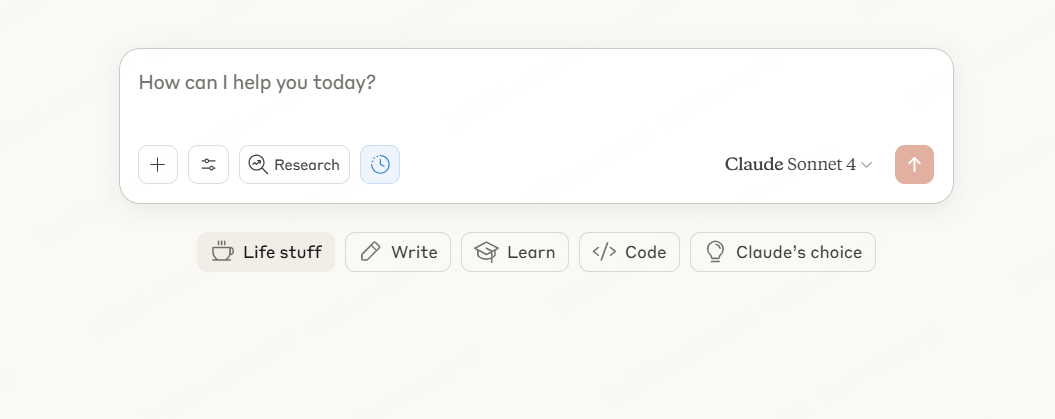
Claude is a gentle "study companion" that explains ideas step-by-step in plain English, making it great for first Python or Scratch questions.
Features:
- Gives bite-sized hints instead of full answers to keep kids thinking.
- Explains errors in simple language, focusing on "how to fix" it.
- Stays patient with repeated "why?" questions.
Gemini
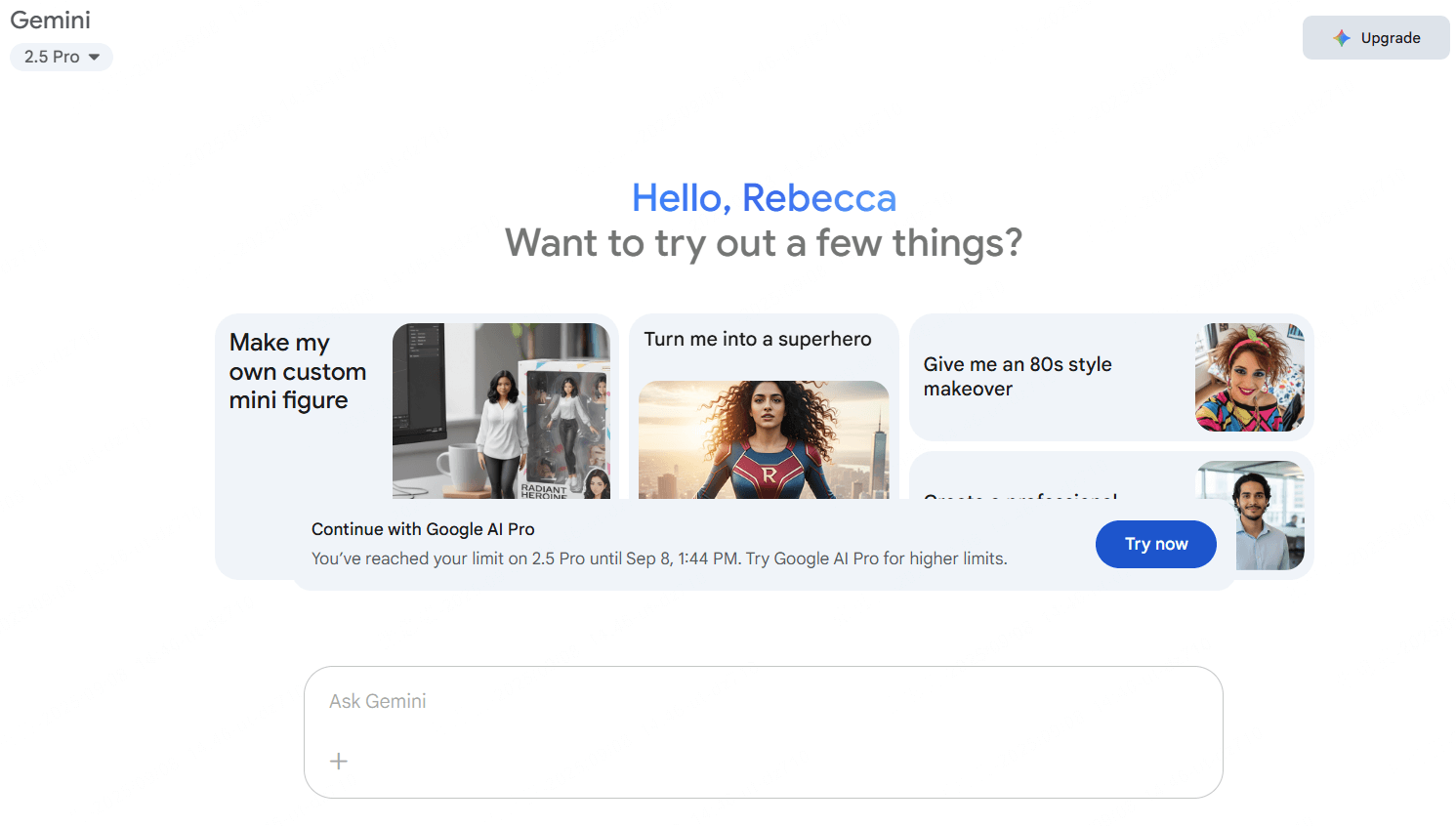
Perfect for visual learners who can paste code screenshots and ask "what's wrong here?" Provides clear diagrams for loops, variables, and events.
Features:
- Reads images and screenshots to point out the exact fix.
- Provides clear diagrams for loops, variables, and events.
- Offers easy tie-ins with Google Classroom/Docs for school projects.
Local AI Assistants
If you're looking for AI tools you can use frequently and without cost, local LLMs are a great place to start. Here are some good options.
Ollama
Ollama runs various models on a home computer so kids can learn to code without needing to create accounts or go online. However, setting it up may requires some technical experience.

Features:
- Work offline and in private so you can focus on your projects without ads or internet distractions.
- Designed to be safe, with the ability to block internet access at the operating system level, making it ideal for school and family use.
- Flexible for all devices, whether you're using a powerful graphics card or just a standard CPU.
Nut Studio
A clean, user-friendly desktop app that lets kids choose a model, ask questions, and get simple guidance with no technical setup required.
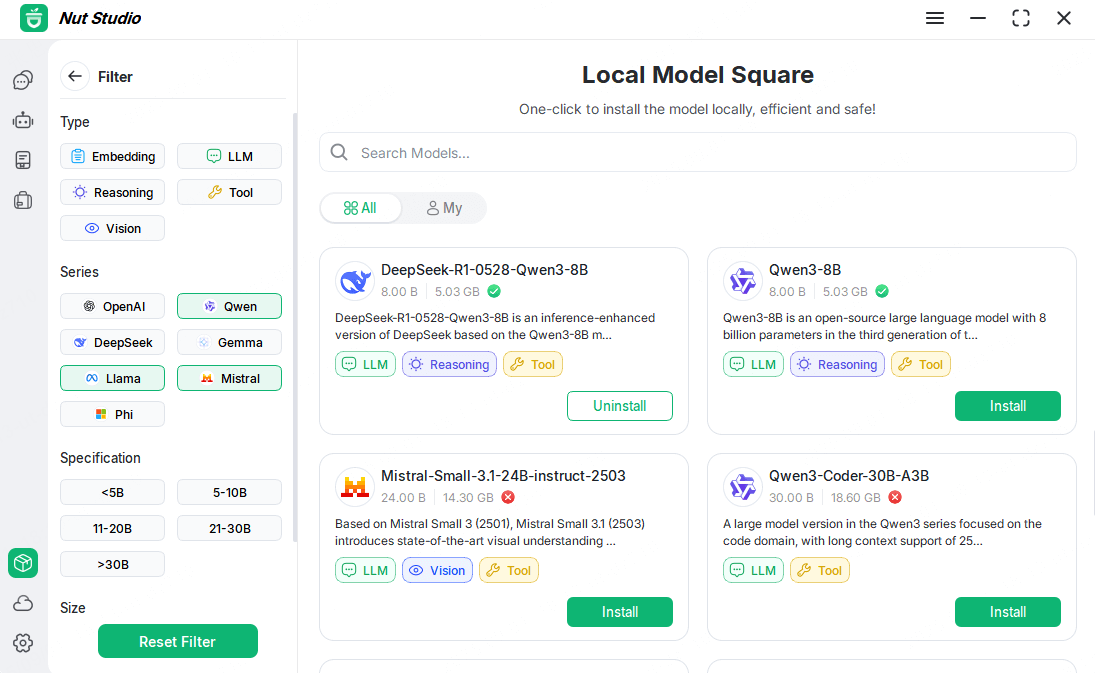
Features:
- Works offline-first by default, keeping young learners safe.
- Curated catalog of over 50 models with different teaching styles.
- Minimal UI so kids focus on coding, not configuration.
- Completely free, support no internet environment and cloud models.
Frequently Asked Questions
What age should kids start coding?
Kids can begin coding as early as four years old using visual programming tools like ScratchJr, which lets kids ages 4-7 learn basic concepts by dragging and dropping blocks without needing to read or type.
What coding language should kids learn first?
For kids under 10, Scratch is the best choice because its colorful, drag-and-drop blocks make it easy to learn fundamental coding concepts without frustrating syntax errors. Once children are around 10 or 11, Python becomes an ideal first text-based language due to its clean and readable syntax that is similar to natural language.
Are coding classes necessary?
In 2025, coding classes aren't strictly necessary. There are tons of free, high-quality resources online, like Code.org, Scratch, and Khan Academy, that kids can use to learn on their own. A good approach is to use free resources for exploration and consider paid classes if your child shows a serious interest or needs extra support.
How can AI tools help kids learn coding safely?
AI tools provide instant, patient, and non-judgmental help. If a child gets an error or doesn't understand a concept, AI assistants like Claude or Gemini can explain the problem and provide step-by-step guidance.
To ensure safety and focus, Desktop AI tools which offer offline support are also good helpers. These tools can turn frustrating moments into learning opportunities, keeping kids engaged and motivated while protecting them from inappropriate content.
Conclusion
Teaching kids to code is easier and more exciting than ever. With free platforms like Scratch, AI assistants providing instant help, and safe learning environments, parents don't need to be programmers themselves.
Whether your child starts with colorful blocks at age 5 or dives into Python at 11, the coding journey develops crucial skills beyond technology—creativity, problem-solving, and resilience. It's about empowering kids to become creators, not just consumers, of the technology shaping our world.
Download Nut Studio for a frustration-free learning experience with over 50 language models to choose from.
 Nut Studio
Nut Studio














Was this page helpful?
Thanks for your rating
Rated successfully!
You have already rated this article, please do not repeat scoring!